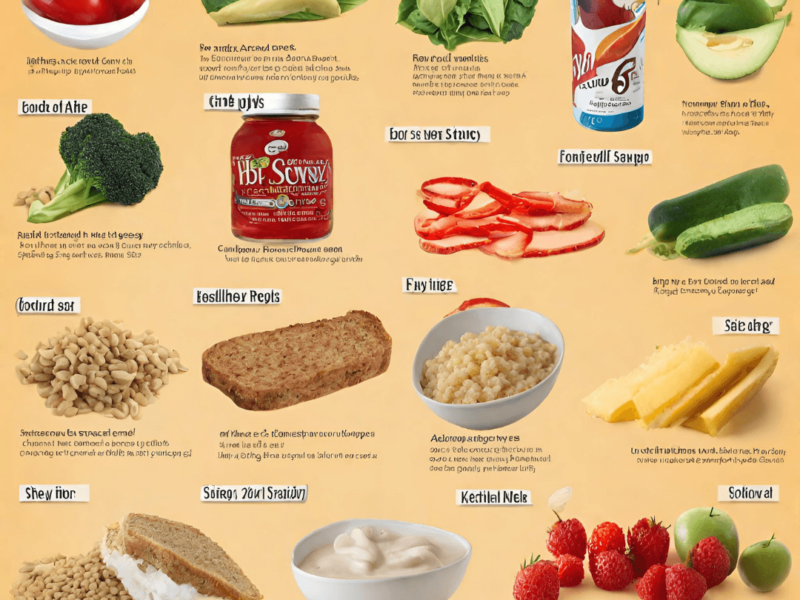Revolutionary Contact-tracing App Harnesses Technology to Predict SARS-CoV-2 Transmission Risk
Introduction
The COVID-19 pandemic has brought the world to a standstill, causing widespread panic and uncertainty. As governments and health organizations around the globe struggle to contain the virus, technological advancements are proving to be valuable tools in the fight against SARS-CoV-2. One such groundbreaking solution is a revolutionary contact-tracing app that harnesses technology to not only track potential COVID-19 exposures but also predict the transmission risk. This article explores the innovative features, benefits, and implications of this app in the battle against the ongoing pandemic.
The Need for Contact Tracing
Contact tracing has always played a crucial role in controlling infectious diseases. By identifying individuals who have come into close contact with an infected person, health authorities can isolate and test them, preventing further spread. However, traditional contact tracing methods are often time-consuming, labor-intensive, and rely heavily on human memory and cooperation. With the rapid spread of COVID-19, there is an urgent need for a more efficient and technology-driven approach.
The Birth of a Revolutionary App
The Predictive Contact-tracing app, as it is aptly named, leverages the power of predictive modeling and artificial intelligence to revolutionize contact tracing efforts. Developed by a team of scientists, epidemiologists, and data analysts, this app combines real-time data collection with advanced algorithms to predict the risk of SARS-CoV-2 transmission with remarkable accuracy.
Real-time Data Collection
The app collects a wealth of data from various sources, including user-reported symptoms, testing results, geographical location, and the duration and proximity of interactions. By continuously updating this data, the app provides a comprehensive and up-to-date picture of potential exposure risks for individuals.
Predictive Modeling
The Predictive Contact-tracing app utilizes cutting-edge predictive modeling techniques to analyze the collected data and identify patterns. By training the algorithms on a vast amount of historical COVID-19 data, the app can accurately predict the likelihood of virus transmission based on various factors such as proximity, duration of contact, and local infection rates.
Advanced Risk Assessment
With the help of predictive modeling, the app assigns a risk score to each user based on their potential exposure and transmission risk. This allows individuals to make more informed decisions about their activities and take necessary precautions to protect themselves and others.
The Benefits of Predictive Contact Tracing
1. Early Detection: By predicting transmission risks, the app enables early detection of potential outbreaks, allowing health authorities to take swift action in implementing targeted interventions and containment strategies.
2. Contact Prioritization: Traditional contact tracing methods rely on individuals’ memory and can often miss crucial interactions. The app’s algorithm prioritizes high-risk contacts, ensuring that those who are at the highest risk of transmission can be reached and tested promptly.
3. Resource Allocation: The accurate risk assessment provided by the app allows for more efficient allocation of healthcare resources. By identifying areas with the highest transmission risk, healthcare providers can focus their efforts on targeted testing, treatment, and contact tracing, maximizing the impact of limited resources.
4. Behavioral Awareness: The app not only informs individuals about their own risk but also raises awareness about the importance of following guidelines and taking preventive measures. This behavioral awareness can lead to a collective effort in curbing the spread of the virus.
Privacy Concerns and Ethical Considerations
While the predictive contact-tracing app offers significant advantages in containing the spread of COVID-19, it also raises important privacy and ethical considerations. The collection and analysis of sensitive personal data must be done with strict adherence to privacy laws and regulations. Additionally, transparency in terms of data usage, storage, and sharing is paramount to ensure public trust and acceptance of the app.
The Future of Predictive Contact Tracing
The Predictive Contact-tracing app has the potential to make a significant impact not only in the current pandemic but also in future disease outbreaks. As more data is collected, the predictive modeling algorithms can be refined and improved, leading to even more accurate risk assessments. Furthermore, the integration of wearable devices and other advanced technologies could enhance the app’s ability to track and predict virus transmission.
Conclusion
The Predictive Contact-tracing app represents a breakthrough in the battle against COVID-19. By harnessing technology and predictive modeling, it offers a more efficient and accurate approach to contact tracing and risk assessment. However, it is crucial to address privacy concerns and ethical considerations to ensure the widespread acceptance and adoption of this revolutionary app. As we navigate through these challenging times, innovative solutions like this app provide hope for a safer and healthier future.
FAQs
1. How accurate is the risk assessment provided by the Predictive Contact-tracing app?
The risk assessment provided by the app is based on sophisticated algorithms and real-time data. It has been trained on vast amounts of COVID-19 data and has shown remarkable accuracy in predicting transmission risks. However, it is important to note that no model or algorithm is perfect, and individual factors can influence the actual risk for each person.
2. What measures are in place to protect the privacy of users’ data?
The developers of the app understand the importance of data privacy and have implemented stringent measures to protect users’ data. Data is anonymized and aggregated to ensure individual privacy is maintained. The app also adheres to relevant privacy laws and regulations, providing transparency in data usage and sharing practices.
3. Can the Predictive Contact-tracing app be used to track other infectious diseases?
While the initial focus of the app is on tracking and predicting SARS-CoV-2 transmission, its underlying technology and predictive modeling capabilities can be adapted to track and control other infectious diseases. The app has the potential to be a versatile tool in future disease outbreaks, providing valuable insights and guiding public health interventions.
Jaguars’ Star Quarterback Trevor Lawrence Forced Out of Game Against Bucs Due to Shoulder Injury

